Our Products Cannot Be Used As Medicines Directly For Personal Use.


Welcome! For price inquiries, please feel free to contact us through the form on the left side. We will get back to you as soon as possible.
Isomerases
Isomerases are a class of enzymes that catalyze the structural rearrangement of molecules within a single compound, converting one isomer into another. These enzymes play a vital role in various biological processes by enabling the interconversion of molecules with the same molecular formula but different structural configurations. This ability to rearrange molecular structures makes isomerases indispensable in metabolism, signal transduction, and the synthesis of complex biomolecules. Therefore, isomerases have numerous applications in research, industry and medicine. Creative Enzymes offers a wide range of isomerases, including racemases and epimerases, cis-trans isomerases, intramolecular oxidoreductases, intramolecular transferases, and intramolecular lyases, each produced to the highest quality standards.

The Significance of Isomerases
Isomerases are a diverse group of enzymes that catalyze the conversion of one isomer into another, including stereoisomers (molecules that differ only in the spatial arrangement of atoms) and structural isomers (molecules that have the same molecular formula but different atomic connectivity). The ability of isomerases to facilitate these conversions is critical for regulating metabolic pathways, maintaining cellular homeostasis, and producing biomolecules with specific functional properties.
The significance of isomerases lies in their role in ensuring the correct configuration of biomolecules, which is essential for their biological activity. For example, in the synthesis of proteins, the correct folding and configuration of amino acids are crucial for the protein's function. Isomerases contribute to this process by catalyzing the conversion of amino acid residues into the correct configuration.
Catalytic Mechanism of Isomerases
The mechanisms by which isomerases catalyze the conversion of isomers vary depending on the specific class of enzyme. In general, isomerases work by stabilizing the transition state of the substrate, thereby lowering the activation energy required for the isomerization reaction. This stabilization is often achieved by the formation of enzyme-substrate complexes in which specific amino acid residues in the active site of the enzyme interact with the substrate, facilitating the rearrangement of atoms within the molecule.
For example, in the case of racemases, the enzyme typically deprotonates one stereocenter, resulting in the formation of a planar intermediate. The enzyme then re-protonates the intermediate from the opposite side, resulting in the formation of the opposite stereoisomer. In cis-trans isomerases, the enzyme induces a conformational change in the substrate that allows rotation about a double bond, converting the cis isomer to the trans form or vice versa.
Classification of Isomerases
Isomerases are classified according to the type of isomerization they catalyze. The Enzyme Commission (EC) system categorizes isomerases under EC number 5, with subclasses that reflect the specific type of isomerization. The major classes of isomerases include:
Racemase and Epimerase
These enzymes catalyze the conversion of one stereoisomer to another. Racemases convert a single stereocenter, resulting in a racemic mixture, whereas epimerases change the configuration of a specific stereocenter in a molecule. An example is alanine racemase, which converts L-alanine to D-alanine, a critical component of bacterial cell wall synthesis.
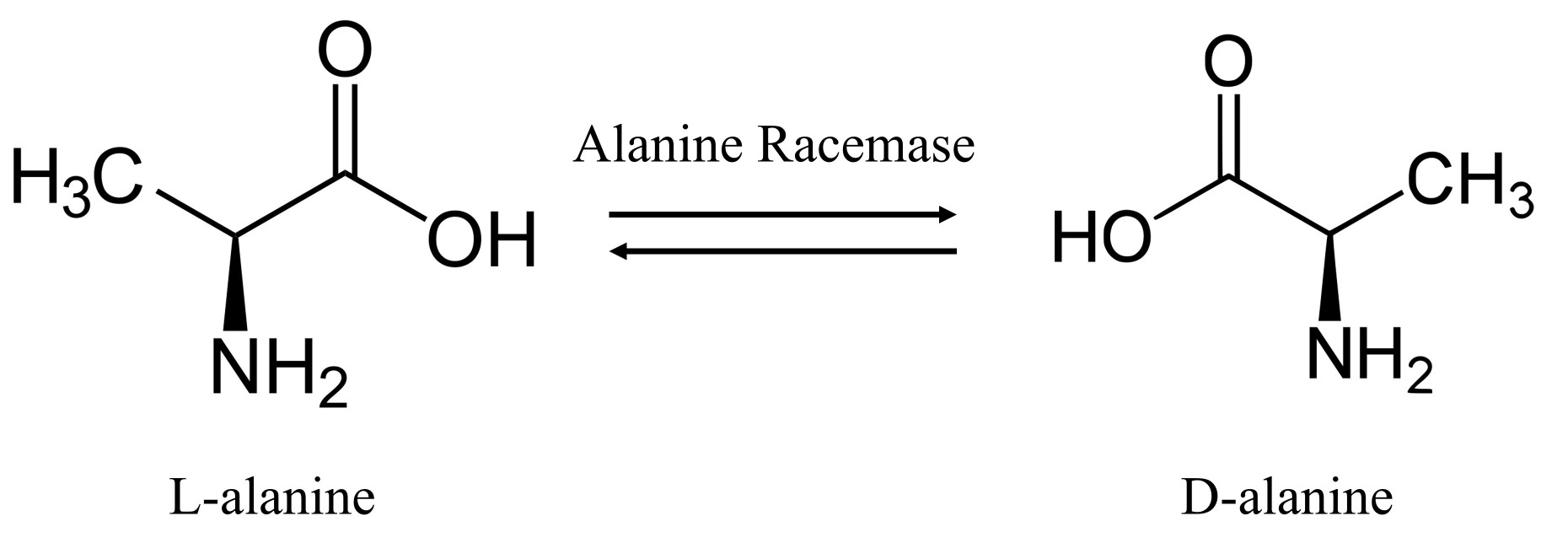 Fig. 1: Simplified reaction mechanism of alanine racemase. The alanine racemase catalyzes the reversible conversion from L-alanine to D-alanine. For this isomerization the cofactor pyridoxal-5'-phosphate is necessary.
Fig. 1: Simplified reaction mechanism of alanine racemase. The alanine racemase catalyzes the reversible conversion from L-alanine to D-alanine. For this isomerization the cofactor pyridoxal-5'-phosphate is necessary.
Cis-Trans Isomerase
Cis-trans Isomerases catalyze the interconversion of cis and trans isomers of double bonds or ring structures. An example is prolyl isomerase, which catalyzes the cis-trans isomerization of peptide bonds involving the amino acid proline, a process essential for protein folding.
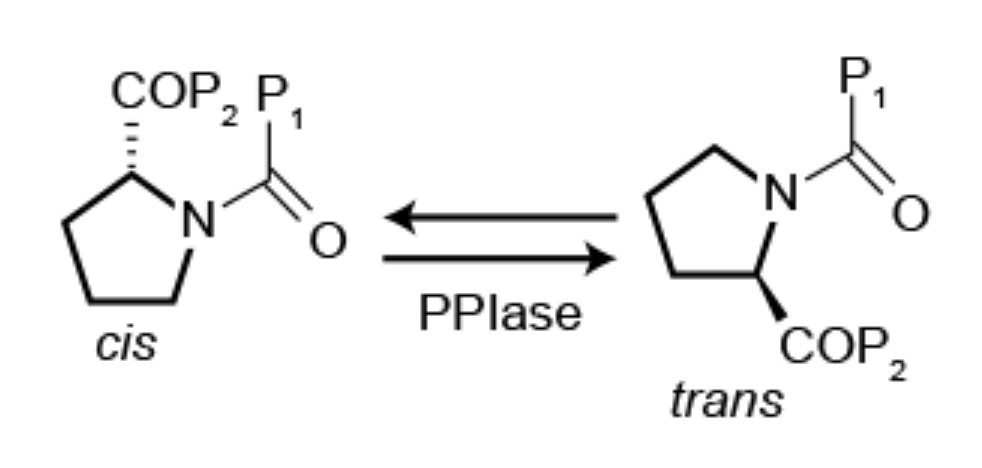 Fig. 2: Simplified reaction mechanism of peptidylprolyl isomerase (PPIase).
Fig. 2: Simplified reaction mechanism of peptidylprolyl isomerase (PPIase).
Intramolecular Oxidoreductase
Intramolecular oxidoreductases catalyze the oxidation-reduction reactions within a single molecule, resulting in the rearrangement of bonds. An example is glucose-6-phosphate isomerase, which converts glucose-6-phosphate to fructose-6-phosphate in the glycolytic pathway.
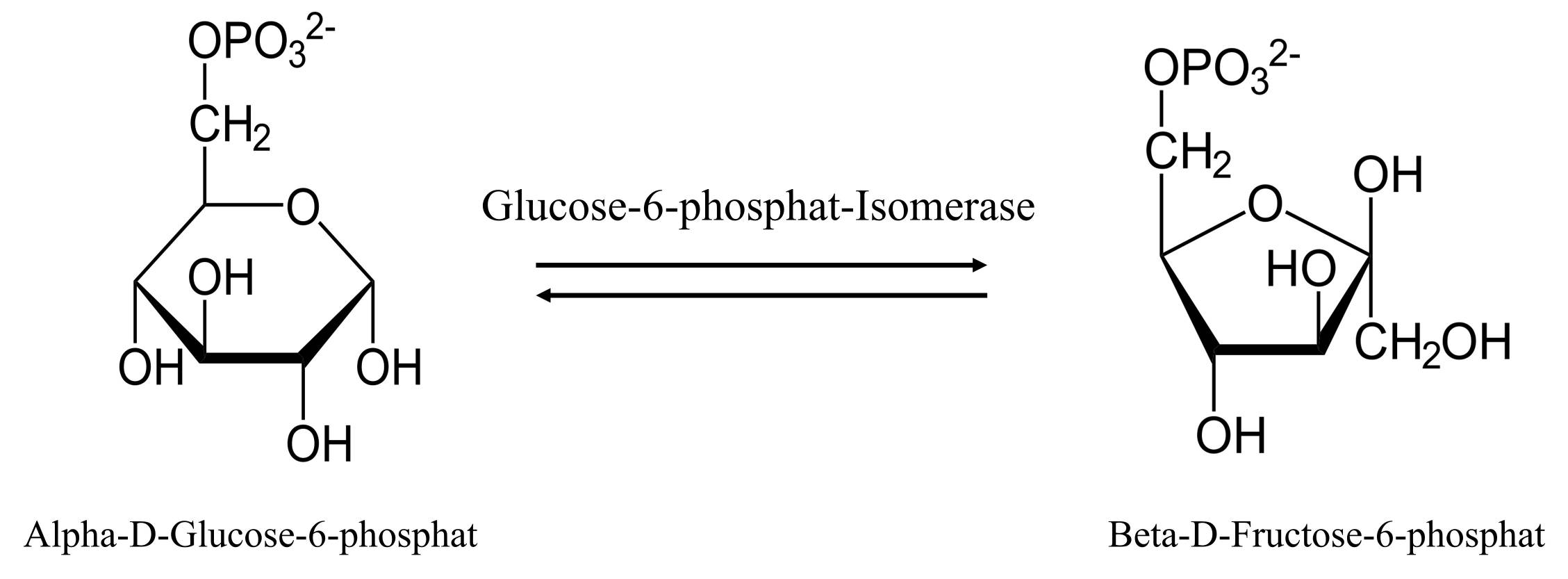 Fig. 3: Simplified reaction mechanism of glucose-6-phosphat-isomerase. Glucose-6-phosphate is converted to fructose-6-phosphate and vice versa.
Fig. 3: Simplified reaction mechanism of glucose-6-phosphat-isomerase. Glucose-6-phosphate is converted to fructose-6-phosphate and vice versa.
Intramolecular Transferase
Intramolecular transferases are also known as mutases, these enzymes catalyze the transfer of functional groups within a molecule, leading to the formation of an isomer. An example is phosphoglucomutase, which catalyzes the conversion of glucose-1-phosphate to glucose-6-phosphate, a crucial step in glycogenolysis and gluconeogenesis.
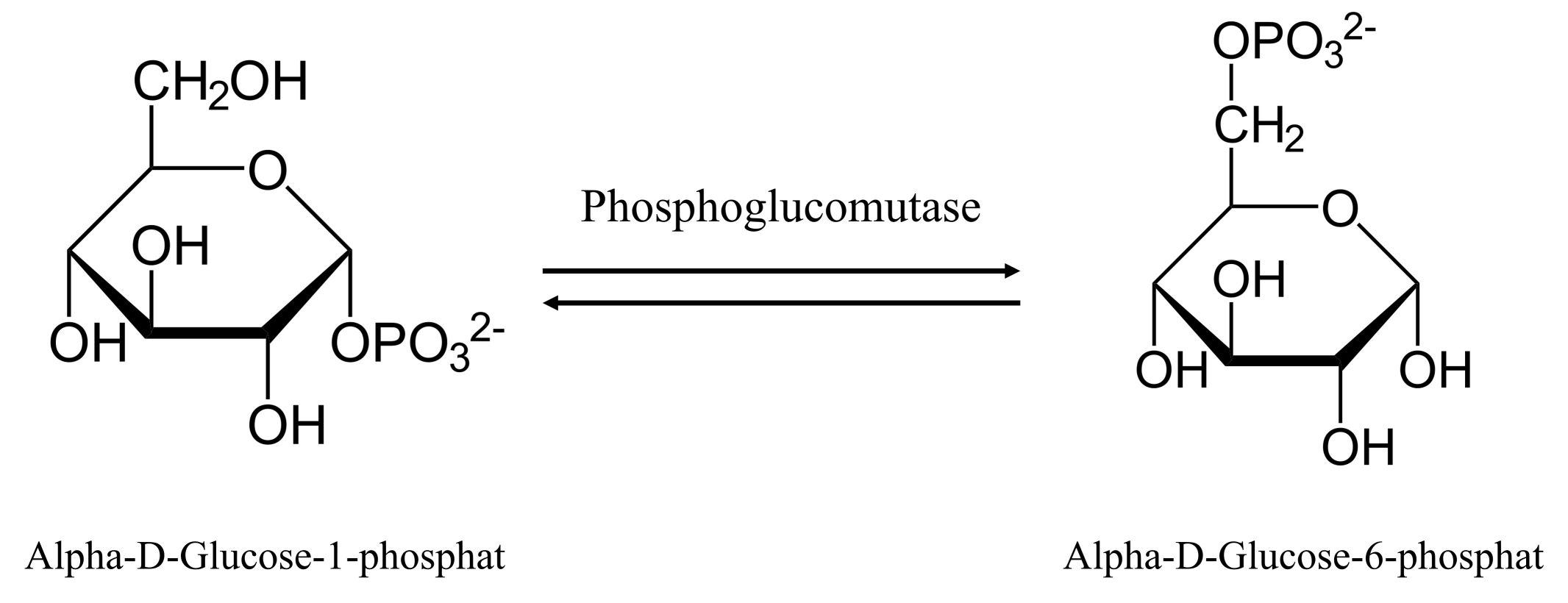 Fig. 4: Simplified reaction mechanism of Phosphoglucomutase. α-Glucose-1-phosphate is rearranged to glucose-6-phosphate and vice versa.
Fig. 4: Simplified reaction mechanism of Phosphoglucomutase. α-Glucose-1-phosphate is rearranged to glucose-6-phosphate and vice versa.
Intramolecular Lyase
Intramolecular Lyases catalyze the cleavage of bonds within a molecule, resulting in the formation of isomers. An example is chorismate mutase, which catalyzes the conversion of chorismate to prephenate, an essential step in the biosynthesis of aromatic amino acids in plants and microorganisms.
 Fig. 5: Reaction catalyzed by chorismate mutase.
Fig. 5: Reaction catalyzed by chorismate mutase.
Other Isomerases
This category includes isomerases that do not fall into the above classes. These enzymes catalyze unique isomerization reactions that are essential for specific biological processes. An example is topoisomerase, which catalyzes the isomerization of DNA by breaking and rejoining the DNA strands, crucial for DNA replication and transcription.
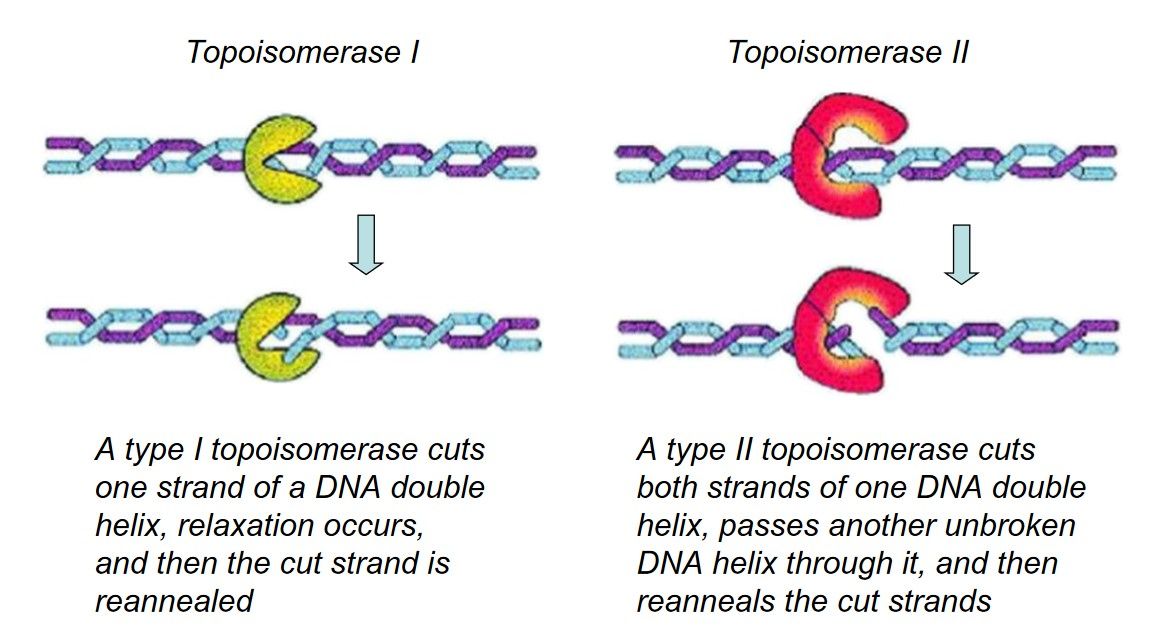 Fig. 6: Schematic mechanisms of action for topoisomerase I and II (D'yakonov et al., 2017).
Fig. 6: Schematic mechanisms of action for topoisomerase I and II (D'yakonov et al., 2017).
Applications of Isomerases
Isomerases have numerous applications in research, industry, and medicine due to their ability to catalyze specific isomerization reactions. These applications include:
- Pharmaceutical Industry: Isomerases are used in the synthesis of chiral drugs, where the correct stereoisomer of a compound is crucial for its therapeutic efficacy. For example, the use of racemases and epimerases in the production of enantiomerically pure drugs is essential for the development of pharmaceuticals with reduced side effects and improved potency. Additionally, topoisomerases are targeted by several anticancer drugs, as these enzymes are involved in DNA replication and cell division.
- Food Industry: Isomerases, such as glucose isomerase, are widely used in the food industry to convert glucose to fructose in the production of high-fructose corn syrup (HFCS). HFCS is a common sweetener in processed foods and beverages, and the use of glucose isomerase is critical to its efficient production.
- Biotechnology: Isomerases are used in the synthesis of biofuels and bioplastics. For example, mutases and other isomerases are used in engineered microbial pathways to optimize the production of biofuels such as ethanol and butanol. These enzymes play a role in converting metabolic intermediates into the desired end products, thereby improving the efficiency of biofuel production.
- Agriculture: Isomerases are involved in the biosynthesis of essential plant metabolites such as amino acids, vitamins and hormones. For example, chorismate mutase is a key enzyme in the shikimate pathway, which leads to the production of aromatic amino acids that are precursors of many plant secondary metabolites. Manipulation of isomerase activity in plants can lead to improved crop yields and resistance to pests and diseases.
- Medical Diagnostics and Therapeutics: Isomerases are used in diagnostic assays to measure the concentration of specific metabolites in biological samples. For example, glucose-6-phosphate isomerase is used in enzymatic assays to quantify glucose levels in blood samples, aiding in the diagnosis of diabetes. Additionally, isomerases like prolyl isomerase are being explored as therapeutic targets for diseases related to protein misfolding, such as Alzheimer's and Parkinson's diseases.
- Research and Development: In basic research, isomerases are used as tools to study metabolic pathways, enzyme kinetics, and protein folding. The study of isomerases provides insight into the regulation of metabolic flux and the mechanisms of enzyme catalysis, contributing to our understanding of cellular function and disease.
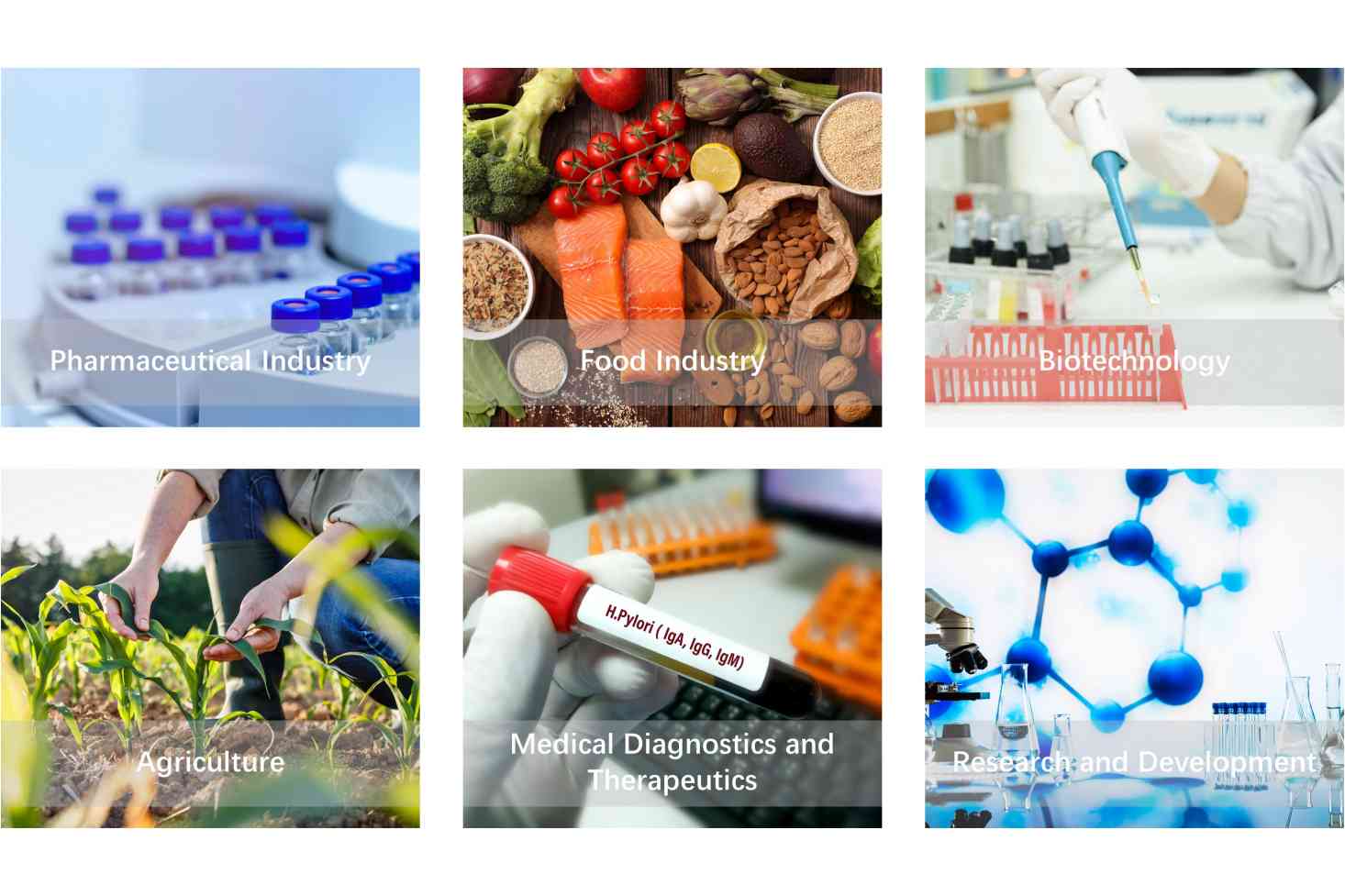
Isomerases are a versatile and essential class of enzymes with diverse roles in biological processes, industrial applications and medical research. Their ability to catalyze the interconversion of isomers makes them invaluable tools in fields ranging from drug development to biotechnology and agriculture. Creative Enzymes offers a wide range of isomerases, each produced to the highest quality standards. Our commitment to excellence ensures reliable and consistent results for all your enzymatic needs. Contact us for inquiries and customized enzyme blends.
Reference:
- D'yakonov, V. A., Dzhemileva, L. U., & Dzhemilev, U. M. (2017). Advances in the chemistry of natural and semisynthetic topoisomerase i/ii inhibitors. In Studies in Natural Products Chemistry (Vol. 54, pp. 21–86).